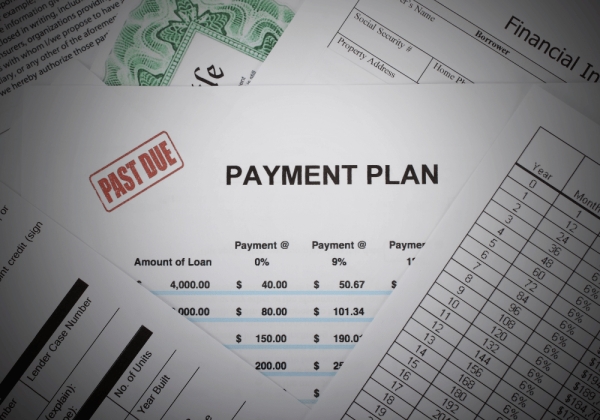Effective accounts receivable (AR) management is vital for maintaining healthy cash flow and ensuring the long-term success of your business. Accounts receivable represents outstanding invoices or payments owed to your company, and delays in collection can lead to cash flow problems, strained vendor relationships, and limited growth opportunities. However, many businesses face significant challenges in optimizing their AR processes, from inaccurate invoicing to difficulties collecting overdue payments.
This blog dives into practical strategies and tools to help businesses streamline their AR processes. By the end of this guide, you’ll have actionable insights to improve efficiency, reduce errors, and ensure consistent cash flow.
Understanding Your Current Accounts Receivable Process
Before improving your AR process, you must understand its current state. Start by assessing and documenting each step of the process, from creating invoices to collecting payments. Process mapping is a powerful tool for visualizing your accounts receivable workflow and pinpointing areas prone to inefficiencies or bottlenecks. Gather data from all relevant sources, such as your accounting software, customer records, and past due invoices, to evaluate the strengths and weaknesses of your system.
Take note of common problem areas, like delayed invoicing, confusion over payment terms, or inconsistent follow-up on overdue payments. You may also uncover recurring patterns, such as certain clients being persistently late or specific invoice errors causing delays. Identifying these inefficiencies provides clarity and enables you to address root causes rather than just symptoms.
It’s also essential to collect feedback from your accounting team or personnel directly handling accounts receivable. Their expertise can offer invaluable insights into operational pain points, overlooked inefficiencies, and customer behaviours that may obstruct timely collections. Combining their input with an objective process review creates a solid foundation for improvement.
Optimizing Invoicing Practices
Invoices are the first step in the AR process, and errors or delays in this step can ripple throughout your operations. Clear, accurate, and timely invoicing is essential for improving payment times. Design invoices to include all necessary information, such as your company name, contact details, itemized charges, total payment amount, payment terms, and due dates.
Use simple, professional formatting to ensure your invoices are straightforward and easy for customers to understand. Adding branding elements, such as your company’s logo and colours, enhances credibility and creates a more professional appearance.
Electronic invoicing is another key tactic to streamline accounts receivable. Sending invoices digitally ensures faster delivery, reduces human error, and provides an organized system for tracking payments. Many AR management platforms allow you to automate invoice generation and delivery, ensuring they reach customers on time without manual intervention.
Ensure that every invoice includes clear payment terms, such as “Net 30” or “Payment due within 10 days.” Consider including late payment penalties if necessary to incentivize timely payments. Ambiguity in your terms can lead to confusion, delays, and disputes, so leave no room for interpretation.
Implementing Effective Payment Collection Strategies
Having a robust payment collection strategy in place can prevent accounts receivable delays and protect your cash flow. Proactivity is key when it comes to collections. Begin by sending friendly payment reminders as due dates approach. Automated email reminders can reduce the administrative burden on your team while ensuring customers never “forget” about an upcoming payment.
Offering multiple payment options also improves collection rates. For example, provide customers with online payment portals or accept a variety of payment methods such as credit cards, bank transfers, or mobile pay solutions. Making payments more flexible eliminates friction in the process and increases compliance.
Avoid waiting until an invoice becomes overdue to communicate with customers. Create a cadence for reminders, such as one week before the due date, the day of the due date, and one week after. By doing so, you’ll emphasize the importance of timely payment while maintaining professionalism.
Communication is key. Always include clear instructions in payment reminders, such as a link to the payment portal or wire transfer information. For recurring clients, consider setting them up with auto-pay options to eliminate missed due dates altogether.
Leveraging Technology for AR Management
Modern AR management software can completely transform how businesses handle accounts receivable. These tools enhance efficiency, reduce errors, and automate time-consuming tasks, allowing your team to focus on strategic financial management.
Look to solutions such as QuickBooks, Xero, and FreshBooks for small to medium-sized businesses, or explore enterprise-grade platforms like NetSuite ERP for larger organizations. These tools offer essential features like automated invoicing, integrated payment portals, and robust reporting capabilities.
Some platforms come equipped with AI-driven insights, helping you predict payment trends, identify risk factors for d
elinquent accounts, and recommend specific actions based on past customer behaviours. Automation capabilities also allow for streamlined collections, such as sending personalized reminder emails or flagging invoices that require manual follow-up.
Investing in AR management software pays for itself over time by reducing human error, improving collection rates, and providing actionable data to inform financial decisions. A well-implemented technological solution can turn accounts receivable from a weak spot into a competitive advantage.
 Managing Delinquent Accounts
Managing Delinquent Accounts
No AR process is immune to delinquent accounts. However, having a well-structured plan for handling overdue invoices can significantly improve the likelihood of recovery. Start with gentle reminders immediately after the due date has passed. These reminders should remain polite but firm, reiterating the invoice details and requesting prompt payment.
If initial efforts fail, escalate your collection efforts progressively. This may include follow-up phone calls or a formal demand letter. Ensure your tone remains professional throughout the process, as maintaining the customer relationship is often just as important as recovering funds.
For accounts that remain delinquent despite escalations, consider engaging with a collection agency or legal representative. Ensure you understand the costs and implications of these measures. For smaller debts or long-time customers, negotiating a payment plan may be a more practical solution.
The key to handling delinquent accounts effectively is consistency. Have a clear, documented policy regarding escalation procedures, timelines, and when to involve outside parties. Adhering to the policy makes the process predictable for your team and sets expectations for your customers.
Regularly Reviewing and Adjusting Your AR Process
The most effective AR processes are dynamic, not static. Regularly reviewing and adjusting your AR workflows ensures they align with the evolving needs of your business and customers. Conduct quarterly or biannual audits of your AR process, focusing on metrics like days sales outstanding (DSO), aging reports, and percentage of overdue invoices.
Key Performance Indicators (KPIs) such as average collection period or invoice error rate can provide insight into areas requiring refinement. Sharing these findings with your team helps highlight progress while identifying specific issues for follow-up action. Consistency in monitoring ensures emerging trends, such as repeat delinquent customers or sudden changes in payment behaviours, are identified early. Use this data to adjust your collection strategies, payment terms, or invoicing practices.
Also, consider ongoing team training to keep your staff equipped with the latest best practices and tools in AR management. Maintaining a culture of continuous improvement helps safeguard your cash flow against unforeseen challenges and supports long-term growth.
Streamlining your accounts receivable process is more than a back-end operation; it’s a crucial business growth opportunity. By understanding your AR workflows, optimizing invoicing and collections, leveraging technology, and proactively managing delinquent accounts, you can unlock better cash flow, fewer payment delays, and long-standing customer trust.
Adopting a proactive and structured approach allows your business to make AR management an asset rather than a challenge. The time and funds saved can be invested in scaling your operations, improving customer service, and exploring new opportunities. Streamline your accounts receivable process today, and watch your business thrive.


